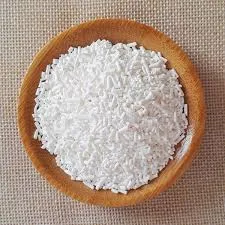
Top Commonly Used Food Preservatives – Ensure Freshness & Safety for Your Products
- Introduction: Understanding Commonly Used Food Preservatives
- The Science and Impact: Technical Advantages of Food Preservatives
- Comparative Analysis: Manufacturers and Common Preservative Types
- Customization Options: Tailoring Food Preservatives for Diverse Needs
- Applied Case Study: Preservative Implementation in Real-World Scenarios
- Future Trends: Innovations in Food Preservation
- Conclusion: Unlocking the Value of Commonly Used Food Preservatives

(commonly used food preservatives)
Introduction: Understanding Commonly Used Food Preservatives
In the rapidly evolving food industry, commonly used food preservatives
play a pivotal role in extending shelf-life, maintaining product quality, and ensuring consumer safety. These chemicals and natural compounds inhibit microbial growth, oxidation, and other processes leading to spoilage. Addressing food wastage, which the Food and Agriculture Organization (FAO) estimates reaches 1.3 billion tons annually, underscores the importance of employing preservatives. The integration of these substances not only minimizes food loss but also streamlines logistics for manufacturers and distributors globally. This introductory section explores what defines the most common preservatives used in food, their historical evolution, and regulatory considerations impacting both production and consumption.
The Science and Impact: Technical Advantages of Food Preservatives
Food preservation techniques have evolved significantly, with technical advancements propelling the efficiency of both synthetic and natural preservative agents. Modern science recognizes several classes: antimicrobials, antioxidants, enzyme inhibitors, and chelating agents. Sodium benzoate and potassium sorbate remain among the most widely adopted chemical options, while natural alternatives such as rosemary extract and tocopherols are gaining momentum. Their integration into processing frameworks offers benefits such as cost-efficiency, scalability, and targeted microbial control. Studies show that products incorporating these agents report a 40-60% increase in shelf-life compared to untreated equivalents. For meat products, for instance, the use of nitrites not only impedes Clostridium botulinum but also enhances color and flavor retention—a crucial demand for both retailers and consumers. Furthermore, advances in encapsulation and slow-release technologies are minimizing dosage while maximizing effectiveness, reducing potential off-flavors and chemical residues.
Comparative Analysis: Manufacturers and Common Preservative Types
When investigating common preservatives used in food, a comparative approach helps in discerning product differentiation, supplier reliability, and regional compliance factors. Below is a data-driven comparison among leading manufacturers and the main preservation agents they produce. This table helps elucidate technical and commercial nuances:
| Supplier | Preservative Type | Main Application | Key Market Region | Annual Output (MT) | Certifications |
|---|---|---|---|---|---|
| Corbion | Calcium Propionate | Baked Goods | North America, Europe | 85,000 | FSSC 22000, Kosher, Halal |
| Niacet (Kerry) | Sodium Acetate | Meat & Poultry | Global | 42,000 | BRCGS, ISO 9001 |
| DSM | Natamycin (Natural) | Dairy Products | Europe, Asia-Pacific | 38,500 | FSSC 22000, Non-GMO |
| Jungbunzlauer | Sodium Benzoate | Beverages, Sauces | Global | 97,500 | ISO 22000, Halal, Kosher |
| Prinova | Sorbates (Potassium, Calcium) | Confectionery, Dairy | Asia, Europe | 65,000 | IFS, FSSC 22000 |
Analysis of this data reveals robust international supply chains, ensuring availability across diverse food segments. Additionally, adherence to multiple certifications assures consistent quality, food safety, and compliance to various religious and ethical standards, enhancing trust among corporate buyers and end consumers.
Customization Options: Tailoring Food Preservatives for Diverse Needs
Manufacturers are increasingly adopting customizable preservative solutions to cater to distinct consumer preferences, regulatory climates, and product matrices. Customization involves modulating preservative blends to achieve optimal efficacy while maintaining organoleptic properties and addressing "clean label" requirements. For instance, dairy producers now prefer natural antimicrobials like nisin over synthetic agents, reflecting stiffening regulations and consumer awareness. Likewise, gluten-free baked goods require specific blends to compensate for reduced natural shelf-life. In markets sensitive to allergens, manufacturers steer towards allergen-free and non-GMO sourced preservatives. This flexibility is further exemplified with liquid emulsions or encapsulated powders tailored for ready-to-eat foods or food service applications, enabling targeted, situation-specific protection. R&D partnerships between suppliers and food multinational corporations expedite solution development, ensuring rapid market adaptation and safeguarding competitive edge.
Applied Case Study: Preservative Implementation in Real-World Scenarios
A performance-driven case study reveals the measurable benefits of selecting optimal preservative technologies. A leading packaged meat producer, facing a 15% product return rate due to spoilage, initiated a shift from traditional sodium nitrite to a customized blend incorporating vinegar and rosemary extract. Over a six-month trial across three facilities, the company recorded a 50% decrease in returns and a shelf-life extension from 7 to 15 days. Microbial counts for Listeria monocytogenes fell by two log cycles without compromising taste or aroma. Additionally, packaging cost per unit decreased by 7% due to reduced spoilage and more efficient inventory management. Consumer surveys indicated a 23% improvement in perceived freshness and a 19% increase in purchase intention, reflecting the confluence of science-based formulation and market-responsive innovation. Such outcomes validate the pivotal role of a tailored preservative strategy in driving tangible business and consumer benefits.
Future Trends: Innovations in Food Preservation
The landscape of food preservation is shifting toward sustainability, consumer health, and functional innovation. Biopreservation—utilizing lactic acid bacteria, bacteriocins like pediocin, and enzymes—shows promise for both industrial and artisanal food producers. The market for natural preservatives is expected to witness a compounded annual growth rate (CAGR) of 6.1% through 2030, with clean label products leading the trend. Novel packaging technologies, such as active films embedded with natural antioxidants or antimicrobials, further enhance shelf-life while minimizing chemical additives. Additionally, blockchain-enabled traceability is emerging as a tool to assure preservative origin, process transparency, and regulatory adherence. Continued research into plant-derived compounds—such as berberine, catechins, and essential oils—expands the functional toolbox for next-generation preservative systems. As collaborative efforts intensify among industry leaders, academia, and regulatory bodies, breakthrough technologies poised to further reduce food loss and extend global supply chains will inevitably reshape the domain.
Conclusion: Unlocking the Value of Commonly Used Food Preservatives
The journey through commonly used food preservatives and their applications underscores their undeniable role in safeguarding food quality, promoting sustainability, and supporting economic efficiency across the food value chain. Leveraging technical advantages, benchmarking leading suppliers, designing bespoke formulations, and learning from real-world implementation empowers stakeholders to maximize food product safety and appeal. With consumer trends and regulatory frameworks in continual evolution, ongoing innovation remains paramount. Selecting and applying common preservatives used in food with precision and transparency enables manufacturers to balance tradition, science, and market demand, reinforcing their competitive stance in a dynamic industry landscape.

(commonly used food preservatives)
FAQS on commonly used food preservatives
Q: What are commonly used food preservatives?
A: Commonly used food preservatives include sodium benzoate, potassium sorbate, and calcium propionate. These additives help keep foods safe and extend shelf life by preventing spoilage. They're approved for use in many countries.
Q: Why are commonly used preservatives important in the food industry?
A: Common preservatives used in food help inhibit the growth of bacteria, molds, and yeasts that cause spoilage. They maintain the quality and safety of products during storage and transport. Without them, many foods would spoil quickly.
Q: Are common preservatives used in food safe to consume?
A: Yes, most commonly used food preservatives are considered safe when used within regulated limits. Food safety authorities set specific rules for their use. Always check labels and follow dietary guidelines.
Q: Which foods typically contain commonly used preservatives?
A: Foods such as breads, sauces, soft drinks, and cured meats often contain common preservatives like sodium nitrite and calcium propionate. These additives help prolong freshness and prevent spoilage. Always refer to ingredient lists for details.
Q: Can I avoid commonly used food preservatives?
A: Yes, you can choose foods labeled as "preservative-free" or opt for fresh and minimally processed products. Reading ingredient labels helps you identify common preservatives used in food. Making homemade meals is another way to avoid them.
-
Nitrile Rubber Honoring Strict Production StandardsNewsAug.22,2025
-
Aspartame Ingredients Honoring Food Safety ValuesNewsAug.22,2025
-
Fertilizer for Balanced Plant NutritionNewsAug.22,2025
-
Cyanide Gold Processing with High Purity AdditivesNewsAug.22,2025
-
Formic Acid in Textile Dyeing ApplicationsNewsAug.22,2025
-
Aluminum Hydroxide Gel in Skincare ProductsNewsAug.22,2025
-
Regulatory Compliance for Global Mining Chemicals UseNewsAug.12,2025
Hebei Tenger Chemical Technology Co., Ltd. focuses on the chemical industry and is committed to the export service of chemical raw materials.
-

view more DiethanolisopropanolamineIn the ever-growing field of chemical solutions, diethanolisopropanolamine (DEIPA) stands out as a versatile and important compound. Due to its unique chemical structure and properties, DEIPA is of interest to various industries including construction, personal care, and agriculture. -

view more TriisopropanolamineTriisopropanolamine (TIPA) alkanol amine substance, is a kind of alcohol amine compound with amino and alcohol hydroxyl, and because of its molecules contains both amino and hydroxyl. -

view more Tetramethyl Thiuram DisulfideTetramethyl thiuram disulfide, also known as TMTD, is a white to light-yellow powder with a distinct sulfur-like odor. It is soluble in organic solvents such as benzene, acetone, and ethyl acetate, making it highly versatile for use in different formulations. TMTD is known for its excellent vulcanization acceleration properties, which makes it a key ingredient in the production of rubber products. Additionally, it acts as an effective fungicide and bactericide, making it valuable in agricultural applications. Its high purity and stability ensure consistent performance, making it a preferred choice for manufacturers across various industries.





